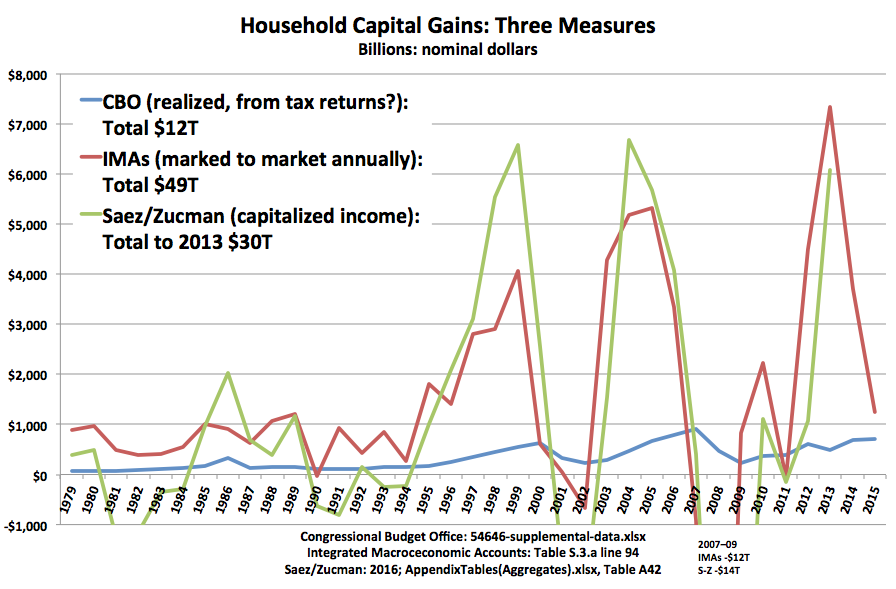It didn’t take long to realize that something was very wrong.
The Congressional Budget Office just released its new report on The Distribution of Household Income, updated to cover 1979–2015. One thing in particular looked very dicey right off (source xlsx):
Household Capital Gains (per household, average)
2007: $8,800
2008: $4,400
2009: $2,200
Wait a minute. Households didn’t incur capital losses in any of those years? Like…trillions of dollars in losses, as real-estate and equity prices dove for the zero lower bound? Red flag, something’s wrong here. (And yes: the CBO does include cap gains in this household “income” measure. Below.)
The report gives zero explanation anywhere I can find of how cap gains are measured/estimated/calculated. But for certain, the CBO’s measure is wildly lower, and wildly less volatile, than other (well-documented) measures:
These other two measures move much more closely together. The CBO measure is the huge outlier. And besides being unexplained, it’s just obviously wrong on its face. It’s missing 60–75% of recent decades’ household capital gains.
Since the top 20% of households own 85% of U.S. wealth, cap gains go overwhelmingly to them. So this cap-gains under-estimate makes invisible a huge part of their income (increases) over decades — whether you’re talking before taxes and transfers, or after. #GotInequality?
State and Local Taxes
Next up: smaller but still pretty huge: when calculating its “after-tax/after-transfer” household income numbers, the CBO ignores state and local taxes — $1.8T last year. If that measure incorporated those taxes, income would be about 15% lower over recent decades.
State and local taxes are regressive: lower-income households pay a higher tax rate (in some states, wildly higher). So with a complete measure you’d see lower after-tax incomes especially among those with…lower incomes.
The CBO measure does of course include federal taxes (which are progressive, especially in lower tiers), and it does include transfers from the states. It seems very odd to exclude taxes paid to the states.
